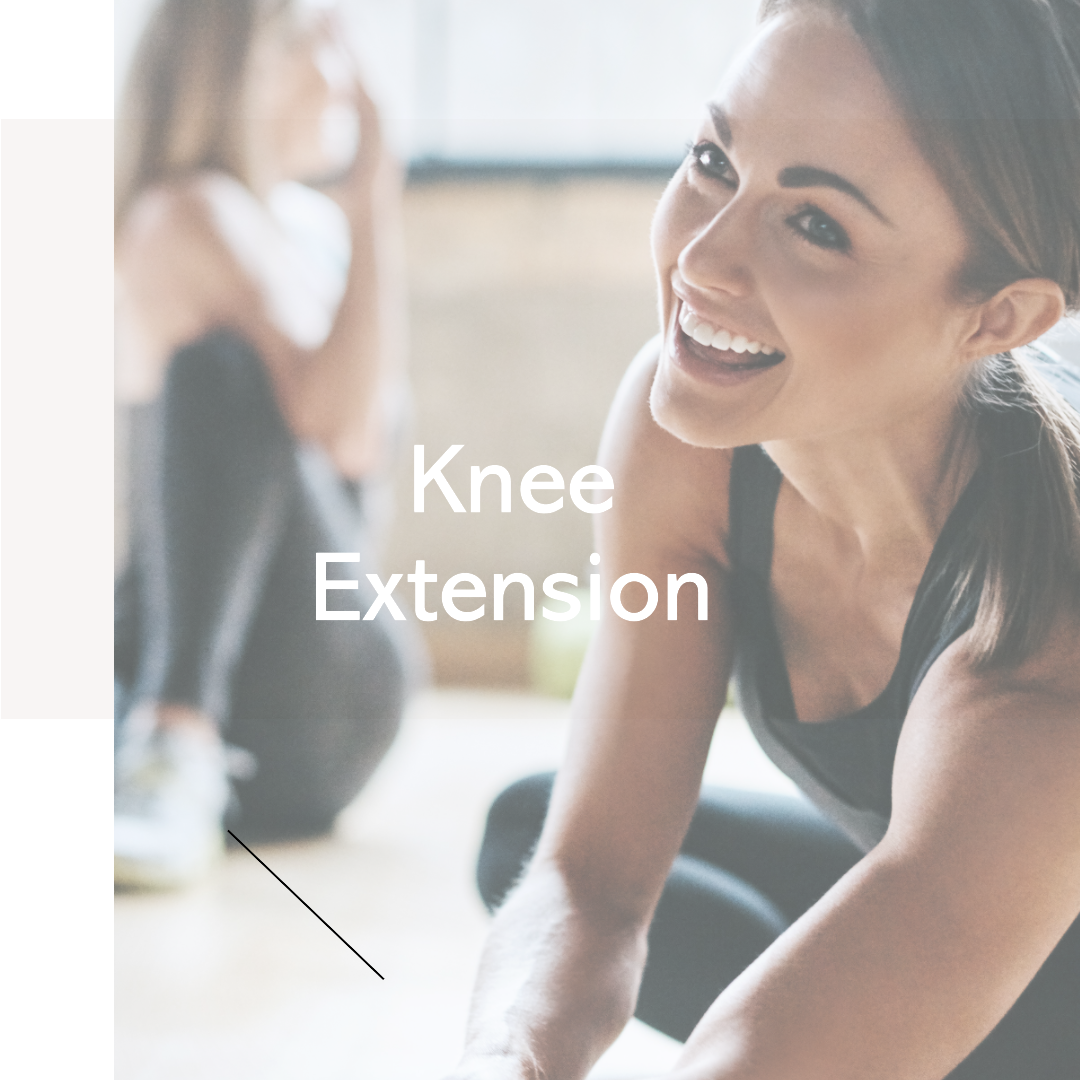Knee Extension: Deficit, Recovery, and Effective Techniques7 min read
Knee extension plays a crucial role in our daily activities and overall joint health. In this blog post, we will explore the implications of knee extension deficits on ACL injuries and daily activities, providing a comprehensive understanding for health enthusiasts looking to expand their knowledge. Our discussion aims to provide valuable insights for health enthusiasts seeking advanced knowledge on the subject.
As we progress through various topics such as proper diagnosis for effective rehabilitation and pre-habilitation before surgery, you’ll gain an understanding of arthrogenic muscle inhibition, mechanical blockages in locked knees, and the benefits of pre-surgical exercises. Additionally, we will explore methods to regain lost range of motion after surgery while ensuring a proper recovery process.
Lastly, we will discuss terminal knee extension exercises and techniques that can strengthen terminal knee muscles effectively. Furthermore, we’ll examine the utilization of specialized terminal knee machines for rehabilitation purposes by highlighting their benefits and available types. Stay tuned as we navigate through these essential aspects surrounding knee extension.
Table of Contents:
- Knee Extension Deficit and Its Impact
- Diagnosing Arthrogenic Muscle Inhibition
- Managing Locked Knees in Orthopedics
- Pre-habilitation Before Surgery
- Terminal Knee Exercises & Machines
- Neuroimaging Study on Force Regulation in Knee Extension
- FAQs in Relation to Knee Extension
- Conclusion
Knee Extension Deficit and Its Impact
Knee extension deficit is a potential complication following ACL reconstruction, significantly impacting an individual’s quality of life and daily activities.
Complications after ACL Surgery
- Extension deficit: Can lead to stiffness, pain, and limited mobility.
- Cyclops syndrome: A painful locked knee due to scar tissue formation in front of the graft site.
- Joint degeneration: Altered biomechanics can contribute to early-onset osteoarthritis.
Consequences on Daily Activities
Achieving complete knee extension can be difficult, making everyday activities such as walking, climbing stairs or getting up from a chair challenging and causing pain when seated or standing for extended periods.
It is essential for those recovering from ACL surgery or dealing with chronic issues like hamstring contractures (source) to address these limitations through targeted exercises that promote terminal extension while minimizing strain on healing tissues.
Diagnosing Arthrogenic Muscle Inhibition
Accurately diagnosing arthrogenic muscle inhibition is crucial for effective rehabilitation and avoiding long-term complications like joint degeneration or cyclops syndrome.
Importance of Accurate Diagnosis
Misdiagnosis of knee extension deficits can lead to inadequate treatment and prolonged recovery times, ultimately affecting a patient’s quality of life.
Advanced imaging techniques like MRI may be necessary to confirm the presence and severity of arthrogenic muscle inhibition.
Rehabilitation Techniques for Restoring Quadriceps Function
Cryotherapy reduces inflammation and pain associated with locked knees, promoting faster healing.
Eccentric exercises improve strength and range-of-motion in patients with knee extension deficits (Figure 2 & Figure 3).
TENS/NMES stimulate and strengthen the quadriceps muscles, improving knee extension.
Manual therapy addresses muscle imbalances and restores proper biomechanics in patients with knee extension deficits.
In clinical practice, a combination of these rehabilitation methods is often employed to achieve optimal results.
Managing Locked Knees in Orthopedics
Orthopedic surgeons deal with locked knees, where patients struggle with knee extension, but cryotherapy, TENS, and NMES can help.
Cryotherapy for Managing Locked Knees
Cryotherapy reduces pain and inflammation, making it beneficial for individuals recovering from ACL reconstruction or other surgeries that may result in knee extension deficit.
TENS and NMES Application
- Transcutaneous Electrical Nerve Stimulation (TENS): Low-voltage electric currents stimulate nerves to reduce pain levels associated with various musculoskeletal conditions including locked knees. [source]
- Neuromuscular Electrical Stimulation (NMES): Controlled electric impulses strengthen weakened muscles responsible for maintaining proper joint alignment during leg press movements or hamstring contracture exercises, improving overall mobility and function of the affected limb.
By incorporating these methods into a comprehensive rehabilitation plan, patients can regain lost range of motion, prevent falls and accidents, and achieve better clinical outcomes.
Pre-habilitation Before Surgery
Don’t let surgery get you down – try pre-habilitation exercises to improve your recovery.
Benefits from Pre-Habilitation Exercises
- Get stronger and more flexible: Targeted exercises increase range-of-motion and prevent stiffness post-surgery.
- Recover faster: Pre-hab programs lead to quicker return to daily activities.
- Improve surgical outcomes: A well-conditioned body responds better to surgery, resulting in fewer complications.
Improving Joint Stability Prior Surgery
For optimal results after knee surgery, focus on regaining lost range-of-motion with exercises that promote both knee extension and flexion movements.
- Straight Leg Raises: Lift your straightened leg off of the ground without bending it.
- Hamstring Curls: Slowly bend one knee while bringing your heel towards your buttocks.
- Wall Slides: Slide down into a squatting position until thighs are parallel to the floor.
These exercises can help you achieve better post-operative outcomes and minimize potential complications related to knee extension deficit, locked knees, hamstring contracture, or terminal extension.
Terminal Knee Exercises & Machines
Strengthening terminal knee muscles is crucial for joint health and mobility, preventing falls and injuries like ACL tears or locked knees.
Types of Exercises for Improving Knee Extension
- Leg Press: Gradually build lower body strength after injury or surgery.
- Straight Leg Raises: Isolate the quadriceps without joint strain.
- Knee Extensions with Resistance Bands: Add challenge to your workout routine.
- Towel Hamstring Curls: Address potential hamstring contracture issues that could contribute to an extension deficit problem.
Terminal Knee Machines for Rehabilitation
Specialized machines like the Terminal Knee Extension Machine allow for controlled, progressive resistance training specifically targeting terminal knee muscles.
Incorporating these exercises and machines into your rehabilitation program can help overcome knee extension deficits and improve overall joint health. Always speak with a medical expert prior to beginning any new workout routine.
Neuroimaging Study on Force Regulation in Knee Extension
In a recent neuroimaging study, researchers investigated the role of the central nervous system (CNS) in regulating force during knee extension and flexion tasks.
Role of Central Nervous System in Regulating Force
The CNS controls muscle contractions, coordinates movements, and maintains balance during physical activities.
Brain Activity Patterns Related to Successful Task Performance
The study showed increased activation in cerebellar, sensorimotor, and visual-processing regions for individuals with less force-matching error during both knee extension and flexion tasks.
- Cerebellar Activation: The cerebellum fine-tunes motor commands sent from other parts of the brain to muscles.
- Sensorimotor Activation: Sensorimotor regions encompass primary motor cortex (M1), supplementary motor area (SMA), premotor cortex (PMC), as well as somatosensory cortices which process sensory information from joints, muscles & skin receptors aiding proprioception & kinesthesia sense essential for coordinated movement planning & execution.
- Visual-Processing Activation: Visual-processing regions help process visual information related to body position and movement.
These findings can potentially inform rehabilitation strategies for individuals with knee extension deficit or other musculoskeletal conditions affecting lower limb function.
FAQs in Relation to Knee Extension
Why is Knee Extension Important?
Knee extension is crucial for maintaining stability, mobility, and overall function of the lower extremities. It allows us to perform daily activities such as walking, running, climbing stairs, and squatting. Proper knee extension also contributes to efficient movement patterns and helps prevent injuries related to muscle imbalances or joint instability.
How Do You Explain Knee Extensions?
Knee extensions are movements that involve straightening the leg at the knee joint by contracting the quadriceps muscles located on the front of your thigh. This action increases the angle between your thigh and shin bones while moving your foot away from your body’s midline.
What is Responsible for Knee Extension?
The primary muscle group responsible for knee extension is the quadriceps femoris, which consists of four individual muscles: rectus femoris, vastus lateralis, vastus medialis, and vastus intermedius. These muscles work together to extend (straighten) the leg at the knee joint during various activities.
What Causes Loss of Knee Extension?
A loss of knee extension can result from several factors including injury (e.g., ACL rupture), surgery (e.g., arthroscopy), inflammation or swelling in surrounding tissues, arthrogenic muscle inhibition, mechanical blockages due to scar tissue formation or locked knees caused by meniscal tears or loose bodies within joints.
Conclusion
Proper knee extension is essential for daily activities and post-surgery recovery. A deficit in knee extension can lead to complications after ACL reconstruction or rupture, and arthrogenic muscle inhibition can hinder rehabilitation efforts. Prehabilitation exercises before surgery can reduce pain levels, while terminal knee extension exercises and machines can help regain lost range of motion.
By understanding the impact of knee extension on our bodies, we can take proactive steps towards maintaining healthy knees. Whether it’s through targeted exercises or utilizing specialized equipment, there are plenty of ways to improve knee function and prevent injuries.
If you’re looking to learn more about how to maintain proper knee health, check out Fitness Mind. With a variety of resources available for health enthusiasts at all levels, you’ll find everything you need to keep your knees in top shape!







